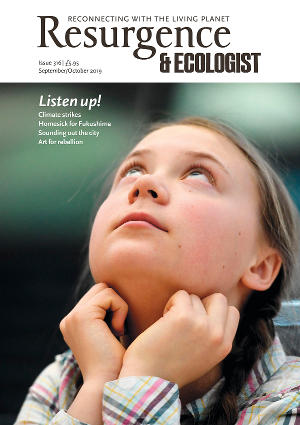Dave Goulson, entomologist, smallholder, professor of biology and founder of the Bumblebee Conservation Trust, writes with a conviction grounded in detailed field studies as well as his own two acres in Sussex. He offers us a conversational overview of all the potential habitats we might find or create in our gardens, a vision of extensive wildlife networks that could regenerate an environment diminished by decades of industrial farming. It’s not difficult to warm to the man, who combines the most serious messages with an idiosyncratic gardening manual and some favourite recipes. He readily admits his garden practice is still a work in progress – a truth all gardeners can share.
Goulson’s expertise lies in the ecology of insect life, so it is not surprising to find the garden’s purposes set out for insect groups. His discourse on bees, moths, pond life, ants, earwigs and worms opens up their life cycles and the conditions they thrive in, demanding of us an aesthetic based on our behaviour. There is a great deal of information lightly delivered, and knowledge illustrated with captivating anecdotes and imagery: a cockchafer named Colin adopted by his son, giant worms, the passion of the Belgian moth hunters, and his own unsuccessful attempts to breed the pine hoverfly in his garden. Stories of friends and colleagues show that the capacity for wonder is a part of good science, carrying through the painstaking work that reveals so much more about intricate ecologies. You will look at your garden anew, each buttercup, fallen apple or heap of forgotten weeds a resource in itself.
The chapter on pesticides is an essential read, for it exposes the fallacy that testing each chemical on its own gives reliable data on its safety. Studies of neonicotinoids and glyphosate demonstrate their all-pervasive presence in the environment and living creatures. There are now major cities whose administrations have banned the use of pesticides within city limits. Less salutary are the statistics on peat, which continues to be extracted for the garden nursery industry in spite of the availability of genuine alternatives. I appreciated Goulson’s advocacy of ‘grow local’ to fill your garden: look around your area and grow what does well – propagating from neighbours and growing from seed will give you healthy plants and successful planting.
Human sustenance is by no means bypassed; Goulson also grows a great deal of food, and he weighed every part of his crops in 2017 to illustrate the productive potential of gardens. In fact smallholders and allotment growers win out against industrial farming in quantity, carbon capture, biodiversity and human health, as well as linking us into a life cycle in which death, predation and decomposition all have a place. Goulson’s garden contains eight compost heaps, as he has the space and the time to let them mature, and he advocates a pond in every garden to enliven and inspire. His orchard currently provides apples for cider. He suggests favourite plants: just sixteen for pollinators and eight for birds, an easy minimum to benefit any garden. While he acknowledges that his perception of animal behaviour is limited, he expresses some scepticism about permaculture and biodynamic growing. It all left me wanting to continue the conversation. You will put the book down and change your habits, whether it’s to leave old vegetation standing for the winter, become better acquainted with solitary bees, or campaign for peat-free potting compost. It’s an essential in every garden bookshop.






